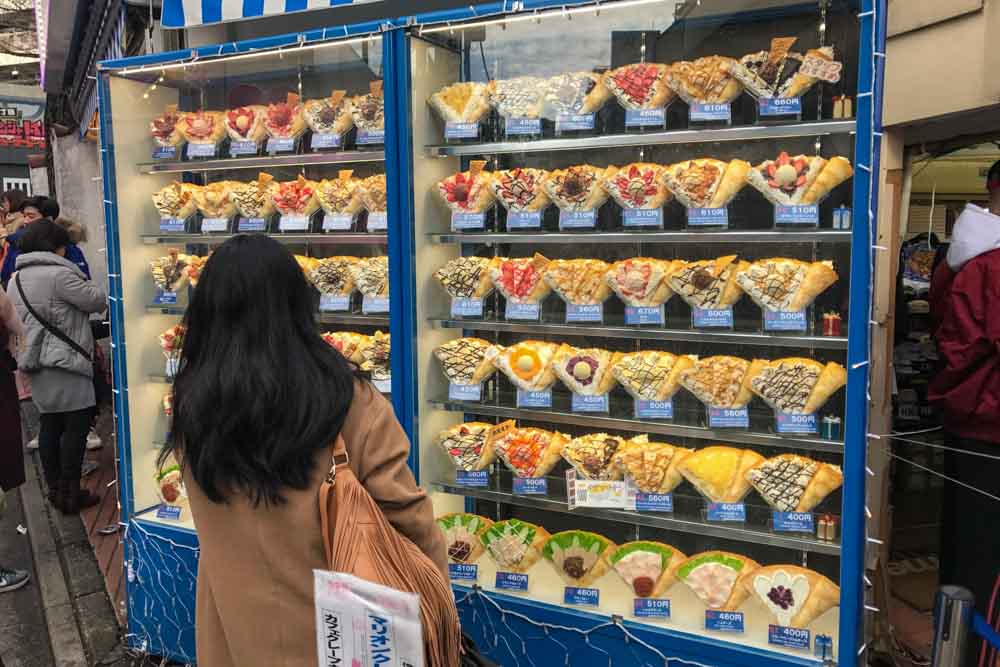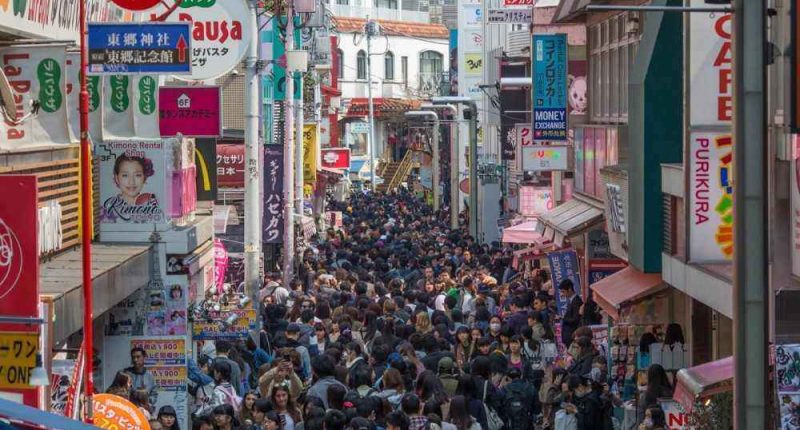Takeshita Dori (竹下通り) is Harajuku’s most famous (and possibly Tokyo’s busiest) shopping street. It slopes down for 400 meters east of Harajuku Station, and has played a significant part in directing and influence youth culture for the past few decades. Stores like Takenoko with its edgy clothing have really put Harajuku on the map, and made the area famous not just in Japan but also abroad. Foreign television crews and documentary makers regularly broadcast images of Harajuku to millions in an attempt to understand and dissect Japan’s youth culture.

A photograph from the elevated entrance to Takeshita Dori near the station is a must for the album, and getting caught in the flow of people as you make your way down to the calmer environs of Omotesando and Aoyama an experience you won’t forget.





